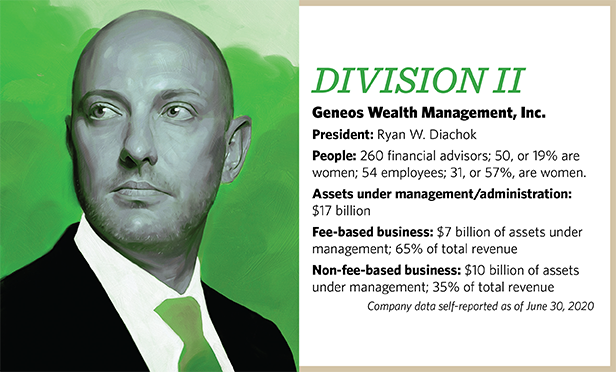IA: What is your approach to the industry’s need for great diversity and inclusion?
Lon Dolber, American Portfolios: When I think of inclusion and diversity, I think of stakeholder capitalism. A good part of our industry is based on shareholder value, but not stakeholder value — which is about community, workers, etc.
We talk to advisors about sustainability and also have exposed them to the United Nations’ sustainability goals. If we understand that, we’ll get to more inclusion and diversity.
Are we looking at public companies? Are we looking at ESG and if they are good stewards and good citizens? That’s a discussion that will drive inclusion and diversity. And, of course, we should set ourselves up as examples.
When we look at our own diversity and our own inclusion, we ask ourselves if we are doing a good job and if can we do better.
Some of this starts at a very young level. We support Virtual Enterprise International, and our internship program is very big. We get high school students that come and see our financial services company, including people of color, girls and young women.
We’ve also done a fellowship program in Ferguson, Missouri, a two-year program that connects people there with financial advisors. It’s all about changing hearts and minds.
If we want more diversity, more inclusion, we have to start in the community. But we also have to expose our advisors to the bigger picture of what I call stakeholder activism, which is about the portfolios that you’re building.
What are those companies that you’re putting your clients into [doing in their communities]? I think the public does care about that. So, … we’re talking to our advisors and doing seminars about it.
Amy Webber, Cambridge: About two weeks ago, we formalized an internal diversity and inclusion committee. We had about 25 associates who nominated themselves to be part of it. We split into subgroups. There’s one focused primarily on financial professionals.
A lot of them are very enthusiastic about taking on issues tied to the fact that while the percentage of women in the industry is still a mess, it’s way better than that of many other categories. What did we learn in that environment and how can we transcend that over into other areas of diversity?
This includes diversity of thought, and our inclusion discussions also include associates and advisors who are, say, taking care of a child with a disability or their parents. It’s been really exciting to watch how these individuals who [said] they wanted to be a part of this have such amazing ideas on how to make a difference.
In so many cases, this work crosses immediately into our social and sustainable investing programs. Advisors want to get out there and do more.
I believe the highest level of competitiveness will be a firm that can appropriately serve the diversity of the clients they choose to serve.
Our advisors want to spearhead and be a part of our efforts to act on these issues — like through our women’s community and efforts focused on racial and ethnicity identity, sexual and gender identity, and so forth. The list goes on and on.
You’ve got to start somewhere, and you’ve got to start talking about it. As the country erupted recently with all of the tensions that we’ve seen, part of me almost said, “Wow, maybe now is not the time to try to pull this off.”
But it was the best time to pull it off, because everybody is raising their hand to get engaged in these efforts. It’s about listening, understanding and tolerance, and that’s been really exciting to watch. If more of the industry continues to ride that momentum, maybe we can make a change.
Dolber: We never did any of this to get publicity, but the fellowship project we did in Ferguson was on Fox News and all over the place. That got so much attention.
It’s interesting. We’re looking to hire a global compliance officer. I said to a chief legal counsel, “We need a person that’s experienced and a person with technical and legal skill. And I know she is out there.”
Ryan Diachok, Geneos: Our industry is focused on this, especially gender diversity — getting more women into it. That’s been a very positive way for our industry to go, though we still have a long way to go.
Close to 20% of our advisors are women, which doesn’t sound like a huge number. But it didn’t look like this 20 years ago, when it was probably half that.
Also, I see a lot of the younger generation, through families in the industry and otherwise, coming up — with advisors bringing kids on board. You’re seeing a lot more daughters than sons coming up, too. They’re becoming involved and ultimately taking over these businesses, which is great to see.









 August 26, 2020 at 07:22 PM
August 26, 2020 at 07:22 PM









